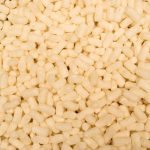We’ve all seen paper plates being used at different functions.
These are plates that are very different to our traditional ceramic or even plastic plates.
The main thing is that these plates are made from trees.
You might have noticed from the name that these plates are made of paper.
Since they’re made out of paper, I’ve been wondering if you can recycle them.
And if so, is the process different to recycling our standard paper? To find out my conclusion, you should keep on reading.
Can We Recycle Paper Plates?
We might think that the answer to this is simple, yet you’ll be surprised to find out what the controversy is around recycling our paper plates.
The thing is, we can recycle certain types of paper plates.
For instance, if our paper plates aren’t contaminated, then we can decide to recycle them without any problems.
Just think of the paper plates that we use for our crafts.
These paper plates generally don’t have any food residue on them.
This is different from the paper plates that we’ve used to eat from.
Paper plates that have had food on them are considered to be contaminated.
But what makes them different from the other paper plates? The answer is simple. During the recycling process, it’s difficult to separate the grease from our paper plates.
This is considered waste residue that entirely affects the whole recycling process.
As a result, this would not only waste the energy consumption used to recycle, but it would waste a lot of money in the process.
So, if you’re thinking of taking your paper plates from last Sunday’s family lunch to your local recycle center, you shouldn’t.
But this doesn’t mean that you shouldn’t consider disposing of them in another eco-conscious manner.
How can we Recycle Paper Plates?
Paper plates that aren’t contaminated can be easily recycled. This is the summary of the process for these paper plates.
- We gather the paper plates and prepare to take them to the recycling plant.
- We sort our plates by removing the contaminated ones from the pile and making sure that there’s no other waste material in the pile.
- At the recycling plant, our paper plates are turned into pulp. This means that chemicals and water are used.
- If we don’t remove all unwanted objects, they get removed from the pulp. A process called screening ensures the efficiency of this.
- Our paper plates contain ink that needs to be removed. De-inking removes adhesives and any ink.
- Thereafter, they’re bleached to ensure that they’re white. The best way to get this done is by using hydrogen peroxide.
- The last stage involves rolling and drying our bleached pulp.
How are Paper Plates bad for the Environment?
The thing is that making paper plates involves many processes.
For instance, a tree needs to be cut down to ensure that the paper is used.
But we don’t think of this when we have to make the choice between our plastic plates and paper plates.
The latter will always seem like a better option.
However, the following reasons why we should reconsider using our paper plates should be compelling enough.
- The deforestation of our trees to make these plates shows that they do affect our environment.
- There’s an imbalance in our ecosystem when there’s a lot of deforestation that occurs. The one point directly affects the other one.
- Due to the deforestation and effect on the ecosystem, there are many animals and plants that lose their habitats.
- There’s a lot of machinery and heavy equipment that is used to produce these paper plates. This results in a significant amount of pollution that affects the environment. In addition, it can affect our health in various ways. As a result, we’re exposed to a lot of chronic diseases in the long term.
- When we use our paper plates to eat from them, we affect their recycling properties. This means that we’re left with a lot of paper plates that pile up and negatively add stress on our environment. Moreover, there are fumes and other toxic chemicals that can seep into our environment.
It’s important for us to note that while our paper plates aren’t always recyclable, they’re still biodegradable.
This simply means that they’re still able to decay into the earth and provide valuable nutrients at the same time.
This can be a good thing for environmental sustainability.
The great thing is that they still contain useful and organic material from our trees.
As a result, this can benefit our soil in many ways even if the decomposition process is slightly prolonged when compared to our actual trees.
In summary, it’s important for us to know which plates we can recycle and which ones we can’t.
The most important reason for this is that when we collect and transport contaminated paper plates to a recycling plant, it can affect the entire recycling process.
This not only affects the energy-efficiency of this process, but it can end up costing the plant a lot of money.
We should always think of how our actions impact the environment.
So, the next time that I decide to use paper plates for my crafts, I will remember to sort them into the pile that I should take down to the recycling plant.



